Japanese Phrases for Travelers (A Cheat Sheet)
When traveling through Japan, it is VERY helpful to have some Japanese phrases under your belt. On my visit there, I found that many people I encountered did not speak English, so I’m so glad that I took some time to a (little) bit of Japanese before my visit.
Keep reading for a list of the top Japanese phrases for travelers, as well as some general information on the language and tips on how to start learning on your own! Your trip to Kyoto, Tokyo, and beyond will be better because of it.
Japanese Language Overview
Language History
The exact origins of Japanese are disputed by top linguists, as there is evidence that it could have originated from either the Polynesian, Chinese, or the Ural-Altaic languages. For a time, many scholars agreed that Japanese is part of the Ural-Altaic language family, which also includes Turkish, Korean, Manchu, and Mongolian. Japanese has been compared with Korean due to similarities in structure, use, and grammar, but the relation is still debated. Today, it the only major language whose origin is still unknown.
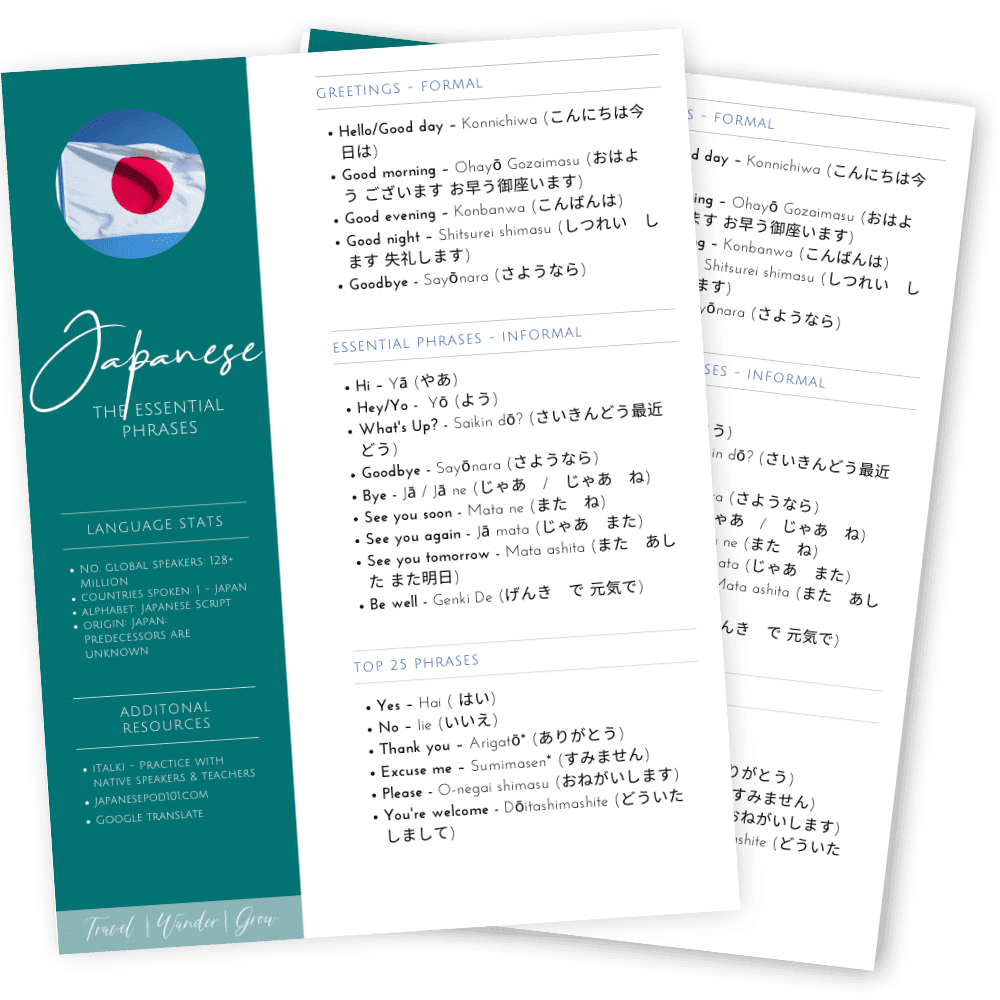
Get your free download!
Japanese Phrases PDF
This free download includes all the key Japanese phrases that you will need for your travels to Japan. In addition, get details on the best resources to improve your speaking and listening skills as well.
Japanese language history can be split into five main periods:
- Old Japanese (Prior to 8th Century)
- Late Old Japanese (9th – 11th Century)
- Middle Japanese (12th – 16th Century)
- Early Modern Japanese (17th-18th Century)
- Modern Japanese (19th Century – now)
Japanese has been a recognized language for the past 1200 years, from around the 8th century AD, where the earliest Japanese writings have been found. Some earlier evidence of the Japanese language has appeared in Chinese writings from as early as the 3rd century AD, but it is not known how long the language has existed on the island.

The Language Today
Today, Japanese is spoken by over 125 million people, most of whom reside in Japan. It is not the official language of Japan, but is the de facto national language of Japan. The standard form of the language is called hyojungo “standard Japanese or kyostugo “common language”. This is the variety of the language that is taught in schools and used in TV and official communications.
There are dozens of dialects spoken throughout Japan, as with many old languages. Some differences are more minor (e.g., changes to pronunciation or words used), while other dialects are so distinct from each other that they are mutually unintelligible. This is most often the case for dialects coming from peripheral regions, mountain villages, or isolated islands in the country.
I will also note, there are other languages spoken in Okinawa, as well as the Ryukyu and Amami Islands, known as the Ryukyuan languages. These languages are part of the Japonic language family, and some are considered endangered languages by UNESCO. Their decline is use is due to a shift in greater use of Standard Japanese and other dialects.
RELATED: Kyoto Travel Guide
Japanese Script
An interesting fact about Japanese that did not know until recently, is that Japanese has no genetic relationship to Chinese. Which was surprising to me because the language does use mostly Chinese characters in its written script. There have been two methods of using Chinese script – the first by using them as characters to represent an object or idea. The second method involves using the script to pronounce Japanese words phonetically – which is not widely done today.
Over time, the Japanese script has been modified from the traditional Chinese characters with the overall simplification of some characters. Additionally, there has been the incorporation of hiragana characters, which are also simplified and have a more rounded appearance.
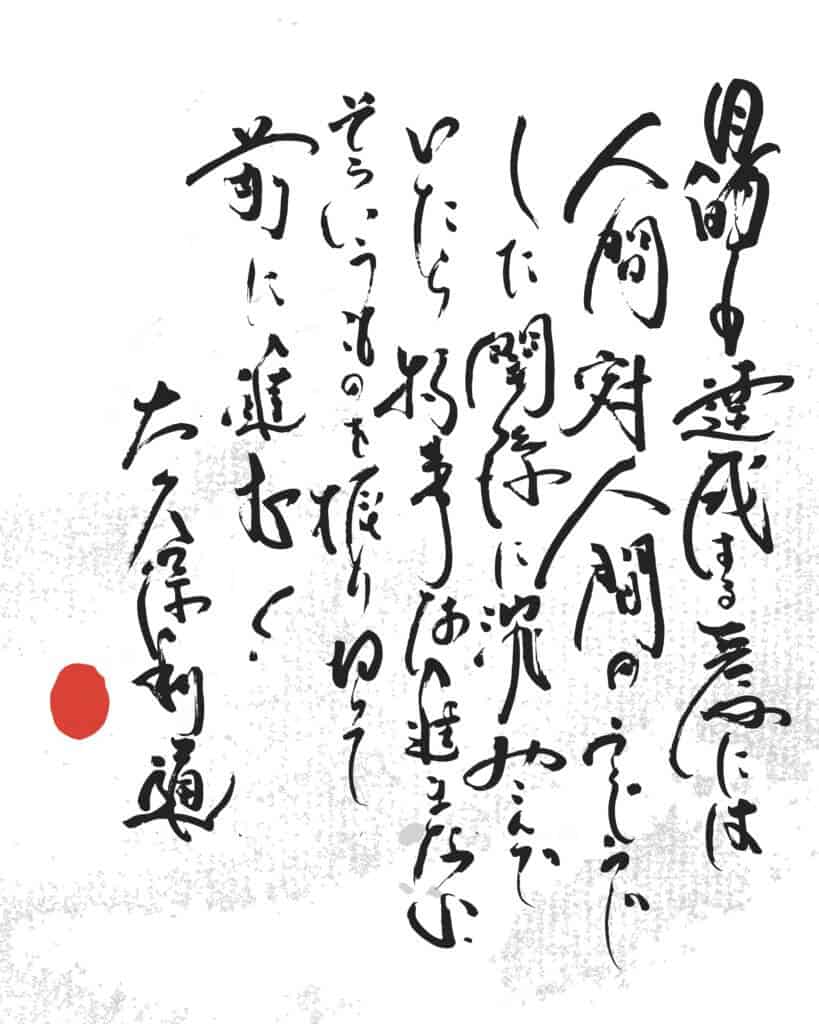
Additional Observations on Japanese
For the true language nerds out here are a few interesting facts about Japanese:
- There are no diphthongs in Japanese, only monophthongs, demonstrating that all Japanese vowels are “pure”
- Word order is classified as subject-object-verb, but the only strict rule there is that the verb must be at the end of the sentence
- The culture in Japan is VERY polite, and that is also represented in the spoken language as there is an extensive grammatical structure to express politeness, formality, and even differing levels of social status
Basic Japanese Words and Pronunciation
Japanese Greetings – Formal
Here are some basic formal greetings (hi / goodbye) that you’d use on a regular day.
- Hello/Good day – Konnichiwa (こんにちは今日は)
- Good morning – Ohayō Gozaimasu (おはよう ございます お早う御座います)
- Good evening – Konbanwa (こんばんは)
- Good night – Shitsurei shimasu (しつれい します 失礼します)
- Goodbye – Sayōnara (さようなら)
Note, when greeting others in Japan be sure to accompany your words with a slight bow. This bow is often done again when saying goodbye as well.
Japanese Greetings – Informal
If you stay in Japan for a time and make friends, it may be appropriate for you to incorporate informal greetings into your vocabulary:
- Hi – Yā (やあ)
- Hey/Yo – Yō (よう)
- What’s Up? – Saikin dō? (さいきんどう最近どう)
- Goodbye – Sayōnara (さようなら)
- Bye – Jā / Jā ne (じゃあ / じゃあ ね)
- See you soon – Mata ne (また ね)
- See you again – Jā mata (じゃあ また)
- See you tomorrow – Mata ashita (また あした また明日)
- Be well – Genki De (げんき で 元気で)

Top 30 Japanese Phrases
Outside of Japanese greetings, here are the top 30 phrases that you should learn before visiting Japan:
- Hello – Kon’nichiwa (こんにちは)
- Goodbye – Sayōnara (さようなら)
- Yes – Hai ( はい)
- No – Iie (いいえ)
- Thank you – Arigatō* (ありがとう)
- Excuse me – Sumimasen* (すみません) – This phrase is important when trying to get the attention of your waiter in restaurants, and when passing people in tight quarters.
- Please – O-negai shimasu (おねがいします)
- You’re welcome – Dōitashimashite (どういたしまして)
- I’m sorry – Gomennasai (ごめんなさい)
- Do you speak English? – Eigo o hanasemasu ka (えいごをはなせますか。)
- I only speak a little Japanese – Watashi wa nihongo ga sukoshi shika hanasemasen. (わたしは にほんごがすこししか はなせません。)
- What is your name? – O-namae wa nan desu ka. (おなまえはなんですか。)
- My name is __ – Watashi no namae wa ___ desu. (わたしのなまえは かおりです)
- How are you? – O-genki desu ka. (おげんきですか。)
- I’m fine, thanks – Genki desu. (げんきです)
- I’m very glad to meet you – Oaidekite ureshī desu. (おあいできて うれしいです。)
- I don’t understand – Wakarimasen (わかりません。)
- What did you say? – Nante iimashita ka. (なんていいましたか。)
- Can you speak more slowly? – Motto yukkuri hanashite kudasai. (もっと ゆっくりはなしてください。)
- I understand you perfectly. – Yoku wakarimasu. (よくわかります。)
- How much is it? – Ikura desu ka? (いくらですか?)
- Do you have ___? – ______ wa arimasu ka? (はありますか)
- Help! – Tasukete (助けて。)
- I don’t need it. – Iranai (いらない)
- Great! / I’m glad! – Yokatta (良かった)
- Are you okay? – Daijoubu desu ka. (大丈夫ですか)
- What happened? – Doushitanda. (どうしたんだ)
- Welcome – Irasshaimase. ( いらっしゃいませ)
- How much does it cost? – Ikura kakarimasu ka? (いくらかかりますか?)
- It costs... – Hiyō ga kakarimasu (費用がかかります)
Note: I’ve put an asterisk by the phrases that I used the most while traveling through Japan.
Counting to 10 in Japanese
There are two methods of counting in Japanese: 1) Sino-Japanese and 2) Native Japanese. Sino-Japanese is used most often (by far), so this is what is demonstrated in the tabel below:
| Number | Japanese Translation |
| 0 | rei, zero, maru (れい、ゼロ、マル) |
| 1 | ichi (いち) |
| 2 | ni (に ) |
| 3 | san(さん) |
| 4 | shi, yon (し、よん) |
| 5 | go (ご) |
| 6 | roku (ろく) |
| 7 | shichi, nana (しち、なな ) |
| 8 | hachi (はち) |
| 9 | ku, kyuu (く、きゅう) |
| 10 | juu (じゅう ) |
RELATED: The Link Between Languages and Travel
Pronouncing Japanese the Right Way
Check out this video from a native speaker that covers pronunciation for many of the phrases listed above. For best results, practice saying the words out loud so that you get used to speaking them.
Japanese Travel Phrases PDF
Keep your learning going by downloading this Japanese Phrases PDF. You will be able to practice as needed before your trip!

Get your free download!
Japanese Phrases PDF
This free download includes all the key Japanese phrases that you will need for your travels to Japan. In addition, get details on the best resources to improve your speaking and listening skills as well.
FAQs about Learning Japanese for Travel
Before your trip to Japan, some common phrases you should learn are “Arigatou gozaimasu” (Thank you very much), “Sumimasen” (Excuse me/I’m sorry), “Konnichiwa” (Hello), “O-genki desu ka?” (How are you?), and “Eigo o hanashimasu ka?” (Do you speak English?).
Japanese people often say “Ittekimasu” (I’ll go and come back) before leaving their home, which is a polite way of saying they are heading out. Similarly, upon returning, they say “Tadaima” (I’m back) to announce their arrival.
The Japanese word for travel is “tabi” (旅).
Some must-know phrases for Japanese travel include “Doko desu ka?” (Where is it?), “Ikura desu ka?” (How much does it cost?), “Eki wa doko desu ka?” (Where is the train station?), “Kudasai” (Please/give me), and “Osusume no o-sake wa arimasu ka?” (Do you have any recommended sake?).
Some cool Japanese phrases include “Yoroshiku onegaishimasu” (Please take care of it/Thank you in advance), “Kawaii” (Cute), “Oishii” (Delicious), “Ganbatte” (Good luck/Do your best), and “Natsukashii” (Nostalgic).
Learning Japanese for Travel | Final Recommendations
That wraps my list of essential Japanese phrases for travelers. Now that you know WHAT you need to learn, the next step is to take it into practice. I suggest that you do that by downloading the attached PDF of key Japanese phrases, and practice the phrases daily for at least a month before your trip.
To complement learning these phrases, there are a few additional resources that you may find helpful:
- iTalki – On this site you can practice with a tutor, formal teacher, or others just seeking to do a language exchange (for free!). The paid lessons have very cheap options, with some as low as $5 an hour. Check it out!
- LigoPie – Practice listening and reading Japanese with videos. You can make changes to the speed you are listening to as well. This is the best way to rapidly increase your comprehension skills!
- Japanese Pod – There are so many free resources on the website and through the podcast they offer. There are paid options as well.
- Duolingo – I don’t find this app useful for practicing spoken language, but it will help you remember key phrases through repetition.
Have you studied Japanese before? Let me know if you have any additional tips in the comments below!
Related Posts on Japan:
- 2 Days in Kyoto
- 4 Days in Tokyo
- Hakone Travel Guide
- The Best Samurai Experience in Kyoto
- Ninja Akasaka Review
Additional Travel Language Guides:
- Portuguese for Travel
- Spanish for Travel
- Italian for Travel
- Thai for Travel
- Greek for Travel
- Language and Travel
Don’t forget to pin this for later!
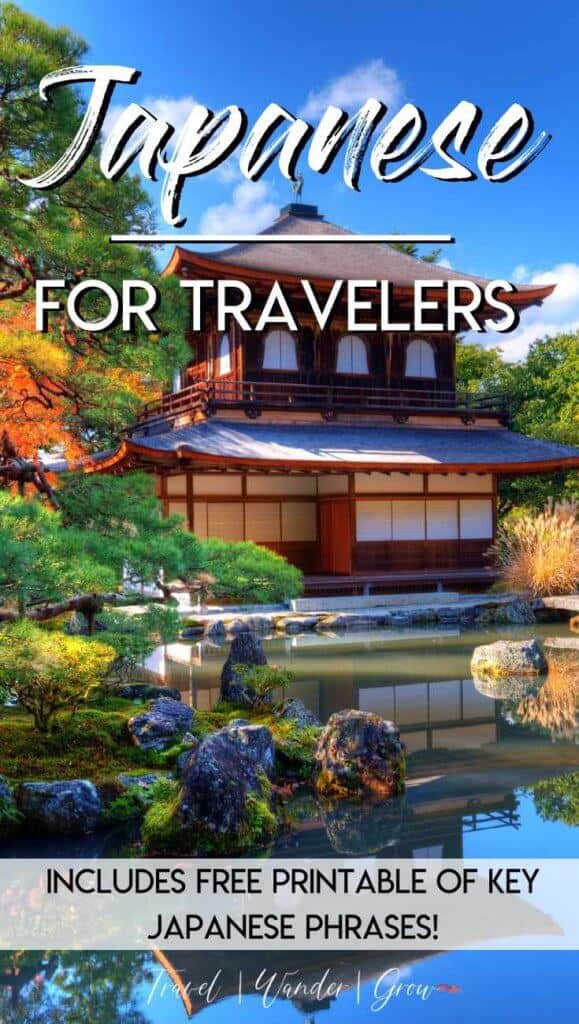
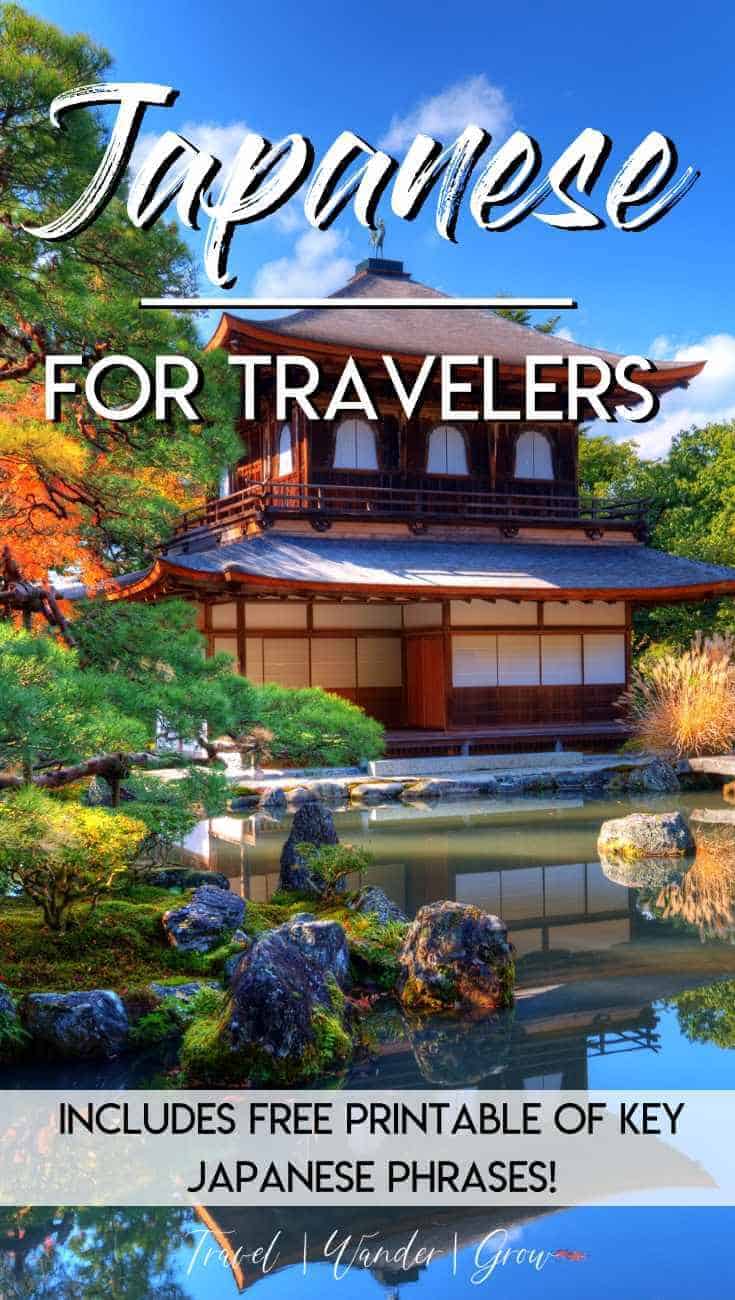

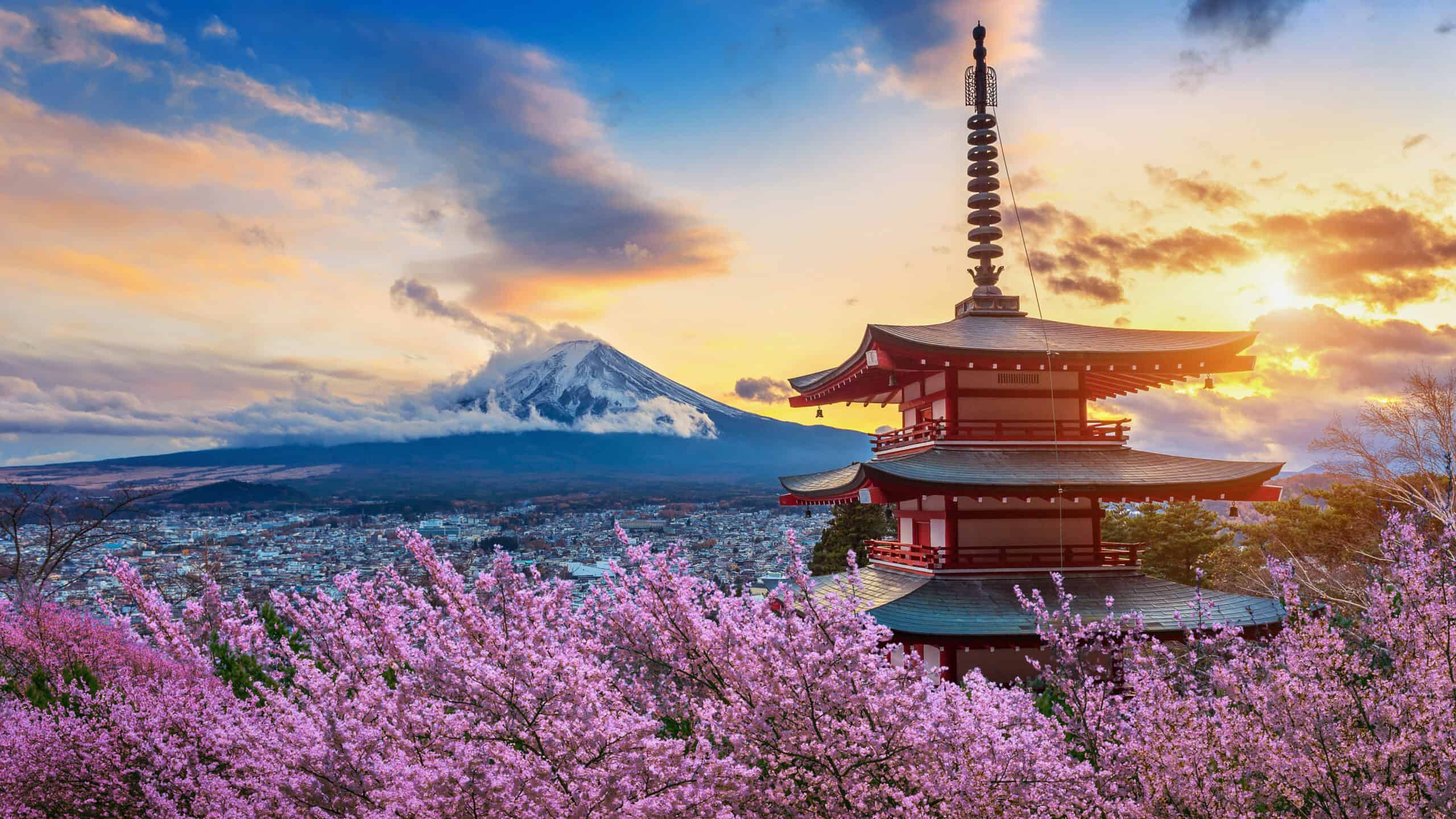
Pinning this for later as we’re hoping to visit Japan in the next few years. Great breakdown of the common phrases. I had a Japanese roommate in high school so I’ve heard a lot of these phrases, but never knew how to spell them – so interesting!
Glad you have found the guide helpful, Emily! Hope you get to practice the phrases soon :).
I am Korean-American & can speak conversational Korean. I feel I would be able to easily pickup Japanese but they seem to talk so fast! Thanks for sharing this post! My husband & I hope to visit Japan later this fall…it will come handy!
Doesn’t it always seem that others speak so fast when you are learning a language? Hopefully you can put these to good use on your trip to Japan!
Very useful and interesting. Thank you! Keep it coming
Glad you found it helpful, Oliver!